We were so excited to cross the border from Yukon into Alaska. With the exception of a backpack trip in Tombstone Territorial Park, Yukon we had spent most of the previous three weeks driving from Washington State, through British Columbia and Yukon. The farther north we got the less "civilization" we encountered and the larger the "landscape" appeared around us. It's huge and it gives one the feeling that "you can go anywhere".
Where we have been - Denali National Park in Alaska
7/22 - 8/4 2010
In this post:
- Dayhikes and bus ride in Denali National Park
- Backpack trip - 3 day/2 nights on the Mt Eielson Loop in Denali National Park
Our first view of Mt McKinley in Denali National Park, Alaska
Denali is different than any of the national parks we have ever visited as there are few constructed and maintained trails. Those that it does have are limited to about 20 miles located near visitor centers. It has one main road that is, for the most part, closed to private vehicles. A fleet of shuttle buses carry visitors as far as Kantishna at the end of the 92 mile long gravel road. This round trip bus ride takes 12 hours. However, tickets can be purchased for closer destinations.
Shuttle buses make stops for any wildlife sighting which can range anywhere from a large animal on the road to a LBD (or LWD), which is short for "little brown dot" (or "little while dot"), an animal seen at great distance. A variety of wildlife can usually been seen from the bus. On that day we saw caribou, moose, Arctic fox, Grey wolves, Dall sheep ...
Dall sheep seen from the bus in Denali National Park, Alaska
... and, the park inhabitant that most visitors hope to see, Grizzly Bears.
Grizzly Bears seen from the bus in Denali National Park, Alaska
We felt especially lucky when we saw a large Grizzly near the side of the road gorging on "Soapberries". Our driver told us that Soapberries are high in fat and an essential source of food for bears. It was fascinating to watch this bear to use his huge front paw with its very long claws to very gently grasp a berry laden branch, bring it toward his mouth so he could strip the berries off with his impressive teeth.
Grizzly Bear seen from the bus in Denali National Park, Alaska
While Mt McKinley may be visible early in the morning it is not uncommon for it to be obscured by clouds in the afternoon when most park visitors are riding the buses.
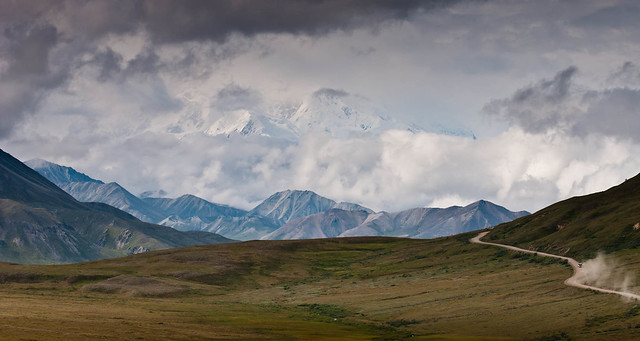
Mt McKinley in the distance and the road to Kantishna in Denali National Park, Alaska
One can get off the bus nearly anywhere to hike and return to the road later to catch a returning bus when done. But knowing where to get off is the challenge and Denali National Park employees, Rangers and bus drivers, are almost passive-aggressive when giving visitors information about hiking and backpacking in Denali. When asked for suggestions their enthusiastic reply is “You can go anywhere. Just decide where you want to go and tell your bus driver where you want to get off”. This advice apparently intimidates most visitors as over 80% never get off the bus beyond the rest stops. John’s retort to the Park Service mantra is “Sure you can go anywhere but can you get anywhere”?
Because it just isn’t as easy as they would have you believe. The terrain includes deep sub arctic tundra, tussocks and marshes, brushy meadows and knolls, thick spruce forests, wide gravel creek beds, steep rocky slopes and creek/river crossings. Not to mention the possibility that one may have to make wide time consuming detours around grizzly bears. However, for those determined to get off the bus and out of sight of the road there is an excellent book on the subject, Denali National Park Alaska Guide to Hiking, Photography and Camping by Ike Waits. His mantra is “Get off the bus”. Interestingly enough, this invaluable resource is not available in the National Park Gift Shop.
With Ike Waits book in hand we purchased a shuttle bus ticket that would take us as far as the Mt Eielson Visitor Center, an eight hour long round-trip bus ride.
The Mt Eielson Visitor Center in Denali National Park, Alaska
On the return trip we got off the bus at Polychrome Basin.
Polychrome Basin in Denali National Park, Alaska
Our plan was to hike as far as Geode Mountain visible across the basin. We knew we needed to monitor our time to ensure we were back to the road in order to catch a bus back to the main visitor center where our car was parked. The basin is so broad and the terrain so slow that, despite hiking for a couple of hours, we never got out of sight of the road and Geode seemed no closer before we had to head back . It’s a humbling experience to feel so small and have one’s actions be so inconsequential. Well, at the very least we did achieve one goal - we got off the bus.
Jean hiking in Polychrome Basin in Denali National Park, Alaska
On a different day we did another dayhike, this time up Tattler Creek. While there are very few constructed trails in the park there are a number of "social" trails created by the many feet that have passed the same way before. Fortunately there was one heading up the creek as the narrow canyon was quite brushy and would have been difficult to "bush whack" through. We had read that there was a "trail" up to a ridge which would provide us with a good view.
John while hiking up to a ridge above Tattler Creek in Denali National Park, Alaska
Once we gained the ridge we did indeed get great views although Mt McKinley was already partially obscured by the all too common afternoon clouds. We were also hit with strong gusts of wind so we walked along the ridge top for a ways until we found some rocks we could hunker down behind to eat our lunch.
Mt McKinley partially obscured by all too common afternoon clouds in Denali National Park, Alaska
We had heard that this time of year that some of the animals are plagued with insects, especially Caribou. The warble fly lays eggs on their legs and abdomen and Bot flies lay eggs in their nose. They seek relief by climbing to the top of windy ridges and while we were taking a break we saw one such animal. We got excited when it started trotting along the ridge top in our direction. While we felt fortunate to have such a close encounter before it turned around and headed down toward Tattler Creek we felt terrible for driving it away from the area where it had the best chance for some relief.
Caribou seen while dayhiking in Denali National Park, Alaska
A fun place to visit while in Denali is the kennels where the park's sled dogs are kept. Rangers do presentations providing information about the dogs and how the rangers rely on them in the winter. While we walked around the kennels admiring to surprising lean dogs we weren't surprised that they were almost all curled up asleep. After all, it was August and quite warm. However, once the demonstration began and Rangers brought some of the dogs out to hitch them up to a sled every single dog was up jumping around and enthusiastically barking.
Ranger with sled dog in Denali National Park, Alaska
Once all of the dogs were harnessed the Ranger let off the brake and they headed around the gravel track at an impressive speed.
Ranger with sled dogs in Denali National Park, Alaska
But by far our best Denali experience was the 3 day/2 night backpack around Mt Eielson, one of the most popular backcountry destinations in Denali. The Mt Eielson loop has been featured in Backpacker Magazine so we had great route finding info on our GPS. The 14.6 mile loop sounds short for three days but the terrain is rough and slow, detouring around bears and safely crossing the Thorofare River (twice) is time consuming. However, the scenery is stunning so why hurry?
We told our bus driver where we were going and he knew exactly where to let us out at Grassy Pass in order for us to take the steep "social" trail down to the Thorofare River valley. Prior to being issued backcountry permits we had been given detailed information about how best to avoid confronations with bears. (details below). We had been encouraged to carry binoclulars so once we reached the river bed Jean began scanning the area for bears and spotted three grizzlies on the other side of the river. Fortunately they were headed away from where we planned to cross the river and the direction we would then head in.
Jean scanning for bears while backpacking the Mt Eielson Loop in Denali National Park, Alaska
River crossings are common when backpacking in Denali. The photo below is the Teklanika River but it illustrates the countless "braided" channels that the glacier fed rivers form. In order to cross safely one must spend ample time looking for the shallowest channels and where the current is not too strong.
The Teklanika River in Denali National Park, Alaska
The glacial water was characteristically cloudy so we were unable to see the bottom. We had considered bringing water shoes but were concerned they wouldn't give our feet enough protection. We instead decided to wear our boots but without orthotics and socks. Gauging the depth was challenging but we made this first crossing without difficulty. Our now wet boots felt heavy and less than comfortable but views such as this one of Mt Brooks soon took our minds off of them.
Mt Brooks seen while backpacking in Denali National Park, Alaska
Once across the Thorofare we headed toward Glacier Creek. We found segments of a "social" trail and followed it up the creek until we saw three more bears, again a sow with two cubs. However, these bears were less than a quarter of a mile away and they were near where we were headed. So we altered our course to give them a wide berth and had to leave the creek and detour over the Muldrow Glacier (visible to Jean's right in the photo below). From a distance the Muldrow does not appear to be a glacier as it is covered by rocks, soil and brushy vegetation but when you are on it you periodically come across small crevasses that enable you to see the glacial ice below.
Once we got up the steep side of the glacier the primary challenge with this new route over the Muldrow Glacier was that it required us to repeatedly cross numerous shrubby knolls covered with Soapberry shrubs, the grizzly’s favorite food at the moment. Visibility was quite limited and we were uneasy. We frequently (and loudly) shouted out “HEY BEAR” and banged our trekking poles together, anything to avoid startling a berry gorging bear. Once we observed fresh bear scat we became quite nervous and doubled our efforts which thankfully proved to be effective. I have wondered if any bears were in the vicinity but simply got out of sight until we finally got out of their "kitchen".
We eventually were able to return to Glacier Creek and continued to follow it upstream until we reached Crystal Creek which we needed to cross. This was by far the easiest crossing which is why we felt comfortable for John to take the time for photos.
We eventually were able to return to Glacier Creek and continued to follow it upstream until we reached Crystal Creek which we needed to cross. This was by far the easiest crossing which is why we felt comfortable for John to take the time for photos.
Jean crossing Crystal Creek while backpacking the Mt Eielson Loop in Denali National Park, Alaska
We camped that night in a very broad gravel bed which provided us with excellent visibility.
Our campsite while backpacking the Mt Eielson Loop in Denali National Park, Alaska
Following instructions we set up our "kitchen" well away from our tent. Our tent is visible in the lower left-hand corner of the photo below and I am just barely visible about two thirds of the way across the photo to the right.
Our campsite while backpacking the Mt Eielson Loop in Denali National Park, Alaska
The next morning John climbed up a nearby ridge for our first view of Mt McKinley before the afternoon clouds moved in.
Mt McKinley seen while backpacking the Mt Eielson Loop in Denali National Park, Alaska
We continued on toward Wolverine Creek which would lead us to Eielson Pass where we planned to camp that night. On our way up we met a young couple coming down who had encountered some aggressive Wolverines and felt fortunate to have been able to get past them safely. So while we continued up we kept a sharp look out for them but we didn't see any. I'm not sure if I felt more disappointed or relieved.
Jean and John heading up Wolverine Creek while backpacking the Mt Eielson Loop in Denali National Park, Alaska
We were happy to have warm sunshine and were able to strip down to tee-shirts for much of the day.
Jean enjoying the warm sun by Wolverine Creek while backpacking the Mt Eielson Loop in Denali National Park, Alaska
We continued up the canyon which became steeper and more narrow. Something always in my mind was where would we go if we encountered a bear. The advice is to slowly back away but that would mean backtracking down the canyon in the same direction that the bear was traveling and it would quickly catch up to us. My only hope was that if we needed to we could climb up the steep side of the canyon far enough that the bear could pass us by. But we reached the pass without problem and were rewarded with outstanding views of the Alaska Range ...

The Alaska Range seen from Eielson Pass in Denali National Park, Alaska
... and Scott Peak.
Scott Peak seen from Eielson Pass in Denali National Park, Alaska
We camped that night in Eielson Pass situated between Mt Eielson and Castle Rock. One concern we had was that there wasn't anyplace to stash our bear canister where it couldn't be knocked down a slope below the pass by an enthusiastic bear. However, as there was nothing up there that a bear could possibly want to eat, we didn't worry too much about it.
Jean in our camp while backpacking the Mt Eielson Loop in Denali National Park, Alaska
As it was August the days were quite long and it was light out when we woke up the next morning about 4:30 AM. John got up first as he planned to take photographs of the mountains, especially Mt McKinley, in the lovely morning light. However, before he had time to get his camera ready he noticed we were no longer alone on the pass. A Grizzly sow coming up from the Contact Creek Canyon (our route out that day) had just crested the pass. She obviously knew we were there before hand as she did not seem at all surprised. She gave us a brief glance in response to our "Hey Bear" and was surprisingly indifferent to our presence ...
Grizzly sow at Eielson Pass in Denali National Park, Alaska
... given the fact she had two cubs following a ways behind her. The cubs expressed more interest in us but thankfully kept following their mom past our camp. All three passed within 40 feet of us before heading down the canyon on the other side of the pass exactly where we had come up the day before.
Bear cubs (with Mt McKinley) seen on Eielson Pass in Denali National Park, Alaska
Our excitement over our bear encounter stayed with us but did not get in our way of the enjoyment of the views of the gorgeous mountains in the clear morning light including Mt Brooks ...
Mt Brooks seen from Eielson Pass in Denali National Park, Alaska
... and Mt Mather.
West ridge of Mt Mather in Denali National Park, Alaska
In fact, I think our heightened emotional state simply added to our excitement of this amazing view of Mt McKinley.
Sunrise over Mt McKinley seen from Eielson Pass in Denali National Park, Alaska
After John finished taking photos we packed up our camp. We reluctantly left the pass and headed down the steep gully formed by Contact Creek toward the Thorofare River.
Looking down Contact Creek towards the Thorofare River in Denali National Park, Alaska
The young couple we had previously encountered had told us where they crossed the river, a short way upstream from the base of the gully. However, when we scanned the area we saw a lone Grizzly on the other side of the river quite near to where we would need to go. Therefore we had to search farther downstream to where the river seemed less braided and the channels deeper than when we had crossed it on our first day out.
The safest place to cross that we found contained one channel that was deeper and with a much stronger current. Due to the cloudiness of the water the only way we had to try to gauge the depth was to throw big rocks in and listen for a vague sound of it hitting the bottom. It's a very imprecise method but it was the best we had. The water level where we crossed was mid-thigh but not too rocky. However, at one point our feet were being pushed downstream on loose gravel, as if rolling on ball bearings. It was disconcerting but we both managed to get across safely and not too wet. I'd love to have a photo of this crossing but, given my poor sense of balance, we both felt it was more important for John to be ready in case I lost my footing.
Once safely across we followed the river downstream until we located a rough brushy "trail" that took us up to the Mt Eielson Visitor Center. We were quite disconcerted to see paw prints heading up the trail but none coming back down so we made lots of noise and frequently looked for escape routes off the trail into the brush. We later heard that bears do approach the visitor center and tourists are kept inside behind locked doors until they finally leave the area. We caught a bus to head back to the main visitor center and were happy to be able to let our guard down and no longer feel like "prey". Our fellow passengers had not seen a single bear on the ride to the Mt Eielson Visitor Center however, as we seemed to be "bear magnets" there were several sightings on the bus ride back.
We had hoped to do a second backpack trip in the Wonder Lake area, for different views of Mt McKinley and more moose, but continued poor weather prevented it and we decided to continue our adventure elsewhere. We feel so fortunate for the amazing views of Mt McKinley that we had as some park visitors have to leave the park without ever seeing it and our bear encounters will remain peak life experiences. All of our Mt Eielson Loop backpack trip photos are on Flickr.
This next bit is just something Jean has been thinking about.
Hey Bear!
Northern Canada and Alaska is “Bear Country” and safely day hiking and backpacking require some additional precautions. I recently realized I have a bear phobia. Intellectually, I know that I’m more likely to be killed on a highway than by a bear but emotionally I was still very apprehensive. At the visitor center in Whitehorse, Yukon we viewed an extensive video, “Staying Safe in Bear Country”, which went into great detail about bear psychology and how to “read” bear body language in order to react appropriately.
In a nutshell, if the bear appears agitated then it is feeling defensive and needs reassurance that you aren’t a threat. You are supposed to slowly back away speaking calmly and “respectfully” to the bear. If the bear approaches and makes contact then the old advice to “play dead” applies. However a bear that appears calm and is intently approaching you may in fact, "mean you harm". In that case you are to stand your ground, make yourself look big, yell at it and stamp your feet. In the unfortunate event it attacks and tries to eat you then you are to fight like Hell aiming for its sensitive nose.
Denali has a lot of grizzlies but, as of August 2010, there has never been a mauling fatality recorded in the history of Denali National Park (update below). While there have been bear attacks on hikers the injuries sustained did not prevent them from hiking out under their own power. We both think that the Denali National Park Service does an excellent job of educating backpackers on how best to avoid confrontations with bears. Prior to being issued a backcountry permit we were required to watch a video which included a segment on bear safety. It provided more practical and less psychoanalytical information focusing on how to avoid grizzly encounters (one Ranger did exhibit a lack of respect for black bears as we were told to treat them “bad dogs”).
The gist of the video was that bears in the wild, at least within the park, have not learned to associate humans with food so they are "shy" and will avoid them whenever possible. We were told that problems occur only when hikers startle a bear, especially a sow with cubs. Bears are not territorial except when in temporary possession of an essential food source be it a carcass or a berry patch. Hikers are instructed to be aware of situations that could increase the likelihood of a close encounter; brushy trails, berry patches, noisy streams and rivers, being downwind etc, and are encouraged to call out loudly at intervals.
Other suggestions including picking up sticks and breaking them as the "snapping" sound gives bears the impression that it is a larger animal approaching so they leave the area. "Bear Bells", which are readily available in gift shops and sporting goods stores, have long been considered a "bear country" necessity. I had a pair myself. However, we heard that bears don't necessarily associate the sound of the bells with humans and may in fact, out of simple curiosity, be attracted to the sound. We heard more than one local in Yukon and Alaska refer to Bear Bells as "dinner bells"!?! And believe me, I tossed mine out as soon as I could after hearing that!

Grizzly Bear seen gorging on Soapberries while riding the shuttle bus in Denali National Park, Alaska
We have backpacked in areas where there are bears; Washington State's North Cascades, Yellowstone National Park etc, so we are familiar with the practice of cooking, eating and storing food at least 100 yards away from our tent. However, there were always trees or "bear poles" nearby to hang our food on. In Denali backpackers are required to store food etc in bear proof food canisters. You must either physically show yours to a Ranger or borrow one belonging to the park.
We commonly keep the food that we plan to eat during the day easily accessible in the top of our packs but in Denali backpackers are instructed to keep all food securely locked bear canister unless you are actively eating it. In the event that one encounters a bear while cooking or eating the instruction is that you slowly back away from the bear but be sure that you take your food with you. We did talk briefly to a young couple who had done just that. The previous evening they had been cooking supper when a lone male bear headed down a canyon toward their camp. They said it was challenging but they picked up their stove and cookpot containing their aromatic supper and backed away. The bear simply gave them a wide berth before continuing down the canyon.
Hikers are also instructed to avoid attracting bears with odors and anything with a strong scent such as fuel, toothpaste, sunscreen and bug repellent should also be kept in the bear canister (but I couldn't help but wonder if smearing our bodies with sunscreen and bug repellent made us more attractive to bears). In addition, we were instructed to only take breaks in open areas with good visibility, to sit facing in opposite directions and continually scan the surrounding area. For the first time in our lives we felt like prey. Indeed, our behavior closely resembled that of the many ever alert Arctic Ground Squirrels prevalent in the far north. It was very humbling to no longer be at the top of the "Food Chain", not a bad thing for we arrogant humans to experience from time to time.
Arctic Ground Squirrel seen in Tombstone Territorial Park, Yukon
For protection hikers can carry bear deterrents. The most common is bear sized pepper spray which can be effective at close range in low wind conditions. Also available, at least in Canada, are “Bear Bangers”, (small shells discharged from a pen size launcher emitting a loud bang) that may be successful at chasing off bears seen in the distance. We didn’t ask if these were legal in Denali but they might be considered to be firearms which (for some unknown bizarre reason) are legal to carry in National Parks. However, it is illegal to discharge them.
Armed with this knowledge, bear canister, pepper spray and Bear Bangers we headed out for our 3 day/2 night backpack around Mt Eielson. I was already uneasy as we had seen nine bears from the shuttle bus on the way to our starting point. Shortly after we started out we saw three more, a sow and two cubs, across a wide gravel river bed but they were moving away from where we were headed so we maintained our current route.
We had been hiking awhile when we saw three more bears, again a sow with two cubs, but less than a quarter of a mile away and quite near where we were headed. So we altered our course to give them a wide berth. The problem was our new course required us to repeatedly cross numerous shrubby knolls with poor visibility. We were uneasy about the presence of plentiful Soapberry shrubs, the grizzly’s favorite food at the moment, and obviously fresh bear scat. Needless to say we were both very nervous and frequently shouted “HEY BEAR” and tapped our trekking poles together, anything to avoid startling a berry gorging bear. Fortunately we got past the area without incident.
We camped the second night in the pass between Mt Eielson and Castle Rock. John got up early the next morning and was getting his camera ready to photograph Mt McKinley. I was working on waking up when I heard him say (with admirable calm) “Hey bear…there’s a bear out here…there are two bears”. I looked outside, saw the sow and cub just as the second cub came into view, and replied (not so calmly and far less “respectfully”) “There’re 3 bears…Hey Bear!?!” We both had our bear spray ready but it never became a truly dangerous situation. The sow simply glanced at John before lumbering past, less than 40 ft away, over to the other side of the pass. While the cubs seemed curious much to our relief neither of them approached us and they simply followed their mother down the other side, exactly where we had come up the day before.
Grizzly Bears (with Mt McKinley) seen on Eielson Pass in Denali National Park, Alaska
Contrary to what we had been told these bears were not “shy” and they didn’t try to avoid us. They were indifferent. They knew we were there but didn’t let that stop them from going about their business, getting to the adjacent valley most likely in search of berries. A young couple we had passed the day before recounted a similar experience where a lone bear simply went around their camp passing them by with little notice.
It got me thinking a lot about bear encounters so I read with interest that in May 2010 a backpacker shot and killed a bear in Denali. A man and a woman were hiking along Tattler Creek and he drew his pistol (legal to carry, illegal to fire) after hearing a noise in the brush. He later told Rangers that a bear ran out of the brush toward the woman so he shot it. I was especially interested in this encounter as we had recently hiked up Tattler Creek and it left me with a few questions.
Did either of them shout “Hey Bear!” frequently (or at all)? Did either carry bear spray? Or were they relying entirely on that gun to protect them? I wonder if the bear was actually running toward the woman or it just seemed that way, they do walk pretty fast. I also wonder if it was just trying to get from "point A" to "point B" and was taking the path of least resistance, the "social" trail through the brush, just as they were. I wonder if they could have stepped off to the side into the thicker brush allowing the bear to just pass them by. If it was in fact running towards them was it because they had startled it and it reacted with a “bluff charge”, a situation where hikers are instructed to stand their ground. And a situation that Park Rangers don’t even want to hear about. We were instructed to report an encounter only if a bear makes physical contact with you or your gear. Lastly I wonder how I would react in the same situation (update below). At least I do know I won’t shoot it. I think I’ll just keep up my “Hey Bears” in hopes to avoid the confrontation in the first place and keep my bear spray handy in case I can't. And if it attacks? Well, I’ll just punch it in the nose.
Did either of them shout “Hey Bear!” frequently (or at all)? Did either carry bear spray? Or were they relying entirely on that gun to protect them? I wonder if the bear was actually running toward the woman or it just seemed that way, they do walk pretty fast. I also wonder if it was just trying to get from "point A" to "point B" and was taking the path of least resistance, the "social" trail through the brush, just as they were. I wonder if they could have stepped off to the side into the thicker brush allowing the bear to just pass them by. If it was in fact running towards them was it because they had startled it and it reacted with a “bluff charge”, a situation where hikers are instructed to stand their ground. And a situation that Park Rangers don’t even want to hear about. We were instructed to report an encounter only if a bear makes physical contact with you or your gear. Lastly I wonder how I would react in the same situation (update below). At least I do know I won’t shoot it. I think I’ll just keep up my “Hey Bears” in hopes to avoid the confrontation in the first place and keep my bear spray handy in case I can't. And if it attacks? Well, I’ll just punch it in the nose.
A few weeks after this John got to experience an even closer, but far different encounter, with bears when he and his camera took a Grizzly Bear viewing flight to the Katmai Peninsula. This is a popular tourist attraction where one can be flown to a beach where bears are actively fishing for salmon. Tourists may be allowed to be as close as 20-30 feet to a bear before their guide will have them back away. What makes this reasonably safe is that the bears have become accustomed to tourists and ignore them, the groups are large enough that a bear is disinclined to mess with them and there is plenty for them to eat so no need for them to feel territorial and defensive. They were also instructed to not pack any fish products in their lunches.
Tourists on K Bay Air Alaska Bear Adventures tour to Katmai National Park, Alaska.
However John can attest that it is a far different visceral experience to be part of a group of 10 people within 30 feet of several bears who have eaten their fill of salmon ...
Brown Bear seen in Katmai National Park, Alaska
... than being only two individuals within 40 feet of three hungry bears in the process of traveling miles in order to reach a berry patch. Which brings up another question…why didn’t the bears in our camp want to eat us? Didn’t they realize how many calories are stored in a human body? I hate to think we both looked so old and stringy that they’d rather walk miles for some berries without even trying just one little bite of me. Come on!?! Hey bear, check out these thighs!
Post Updates:
We have since had a much closer Grizzly encounter. In August 2012 while backpacking in Grand Teton National Park, Wyoming we had a Grizzly approach us while we were still in our camp. We were sitting opposite each other and had been talking when all of a sudden John started yelling “Get out of here bear!” I turned around and there was a huge head sticking out from the shrubs about eight feet away from us. We were in the process of packing up and had the tent down but we had not finished organizing our food so our bear canister was open and our bags of day food were sitting out on a rock. We both knew we had to stand our ground as our gear, especially our food, was too scattered for us to gather it all up and slowly back away.
Fortunately this bear didn’t appear “agitated”, he wasn’t “huffing” or clacking his teeth. He just stood there. It became apparent that yelling wasn’t enough to chase it away so John got his bear spray out (although I know he really wanted to get his camera instead) and I started throwing rocks at it. I didn’t want to actually hit it for fear I would injure an eye or it would just make it mad. But after it still refused to move I started throwing larger and larger rocks at him (fortunately there were plenty close at hand to choose from). It finally ducked back into the shrubs only to try to approach from the side around some adjacent rocks. I had wanted to make sure it had left the area so I was ready for it. This time I did try to hit him and I think I was successful as he finally ran off but stopped every few yards to lick his left fore paw.
Grizzly bear running away from our camp while we were backpacking in Grand Teton National Park, Wyoming
In hindsight it seems a bit funny because we and the bear must have had the same perplexed expression on our faces. We had assumed that once we made a lot of noise and threw rocks at it that the bear would just leave. The bear apparently assumed that once he stuck his head through the bushes that we would run away and he would get our food. Unfortunately it is likely that this bear has been successful in this way in the past in this very spot. What surprised me the most was how little fear I actually felt at the time, I was almost angry. I didn't think that retreat was an option for us even if we could have picked all our food up and back away because we also didn't want to let the bear maul our gear. We did not want to reinforce the bear's behavior and felt that we had to stand our ground.
Sadly it is no longer true that Denali National Park has never had a human fatality due to a bear mauling. In August 2012 a lone hiker was killed by a Grizzly . However, this fellow, a photographer, did not follow NPS advice. He apparently observed a Grizzly in the distance but rather than take a quick photo and get the Hell out of there he stayed where he was. The photos on his camera prove that he continued to take photographs even after the bear saw him and began to approach him. Park Rangers were able to locate the bear and it was shot.
This was such a tragedy is so many ways. The biggest is of course the photographer's death and the grief felt by his family and friends. But it is also a tragedy that another Grizzly Bear in Denali National Park was shot simply for doing what bears do in their own home after some hikers and backpackers did not follow the "house rules". I recently read that a Black Bear in Glacier National Park had to be destroyed due to the carelessness of many campers. Those of us who choose to spend time in "Bear Country" simply must use good judgment and take responsibility for our actions. We have to accept that we are "guests" who barge, uninvited, into their "home". They do their best to avoid us and wait patiently for us to leave but when we screw up and disrespect our "hosts" we shouldn't be surprised that they expect us to accept the consequences of our actions. Unfortunately, it will always be the bears who pay the ultimate price for our mistakes.
I reluctantly reported the bear in our camp in Grand Teton to Park Rangers knowing that I could be helping to complete that bear's "death warrant" but what else could I do? Where we camped was a desirable site in an easily accessible area (Upper Paintbrush Canyon) and would undoubtedly be used by others in the future. I didn't want to read a future account of some unsuspecting backpacker being injured or killed by a bear in that area. My best hope is that getting hit on the paw with a rock will encourage that bear to avoid humans from now on, at the very least irritable postmenopausal women.
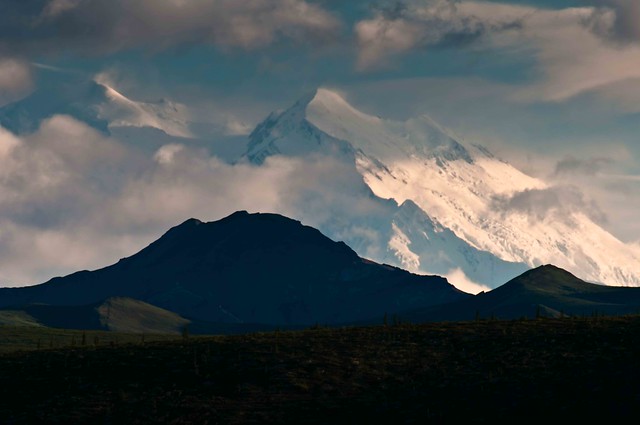
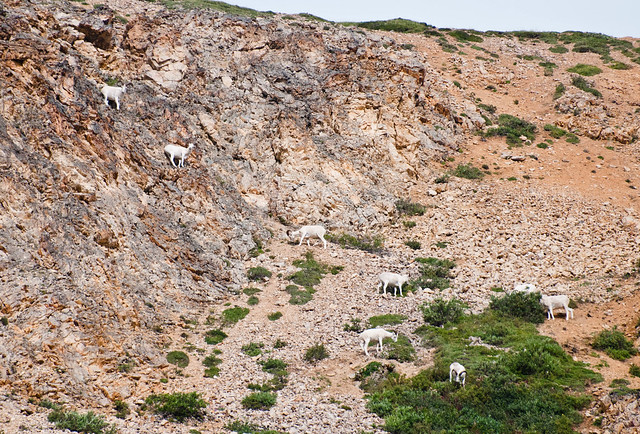

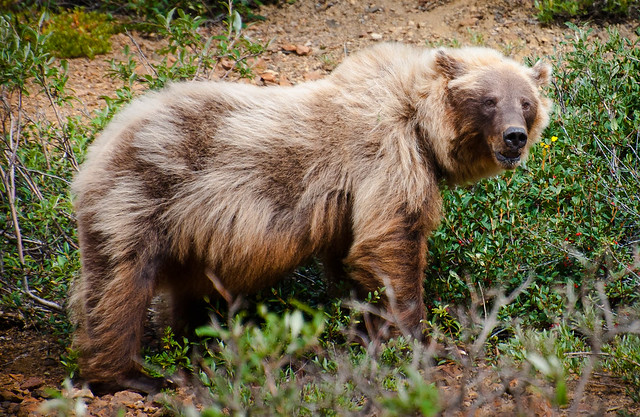
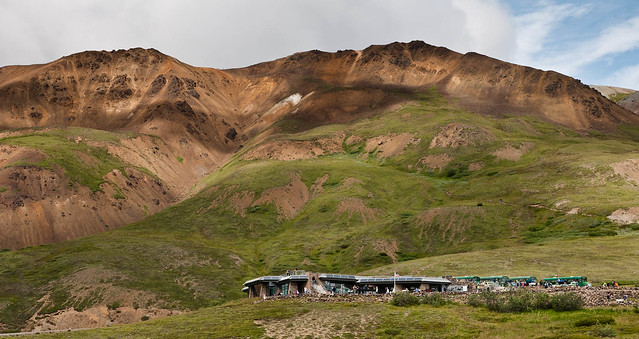

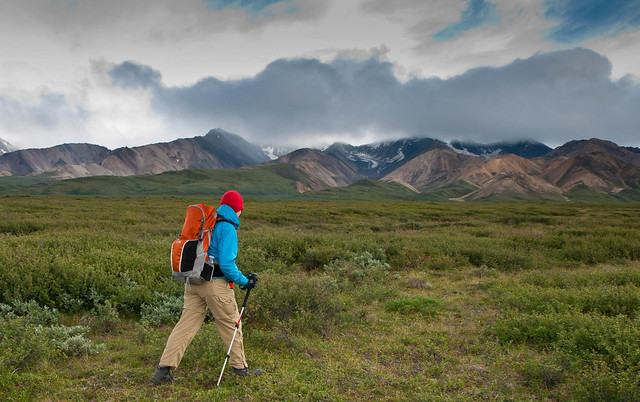
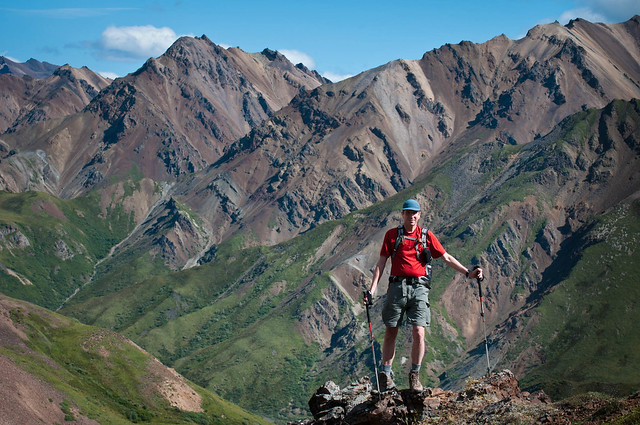

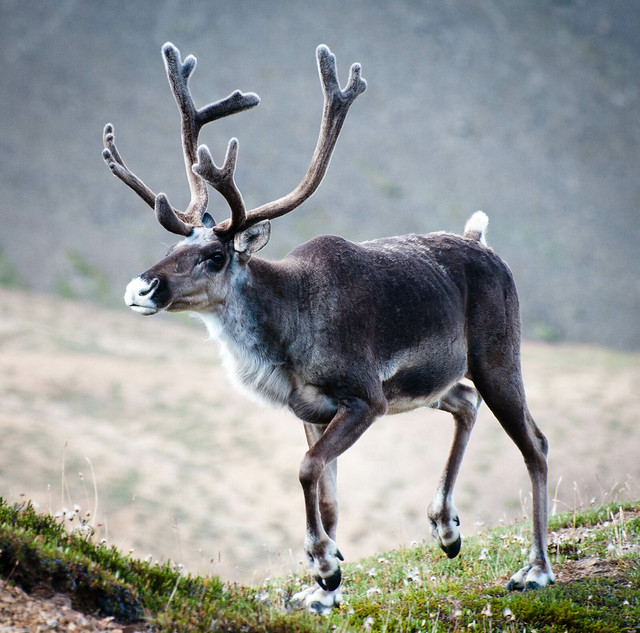
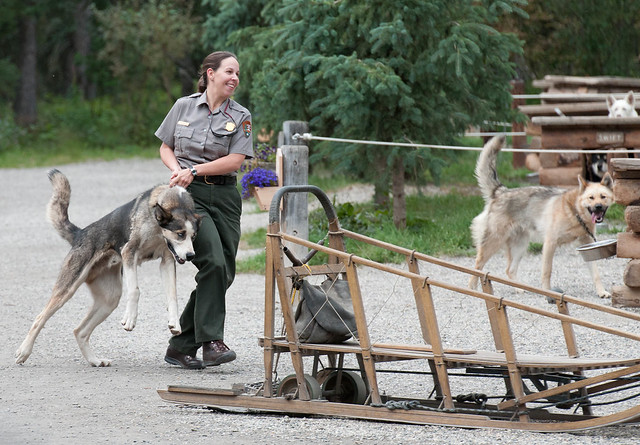
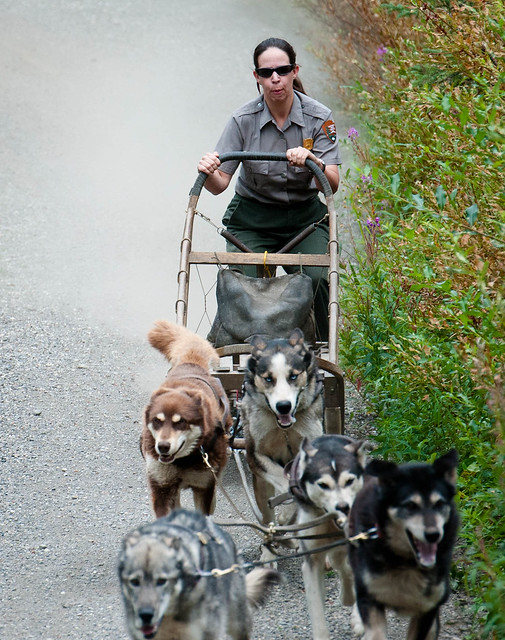
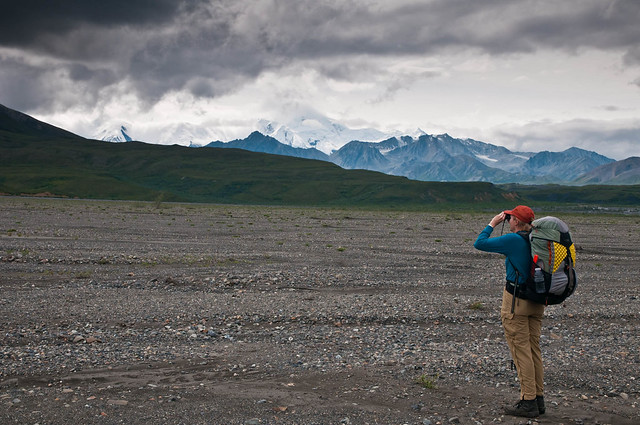
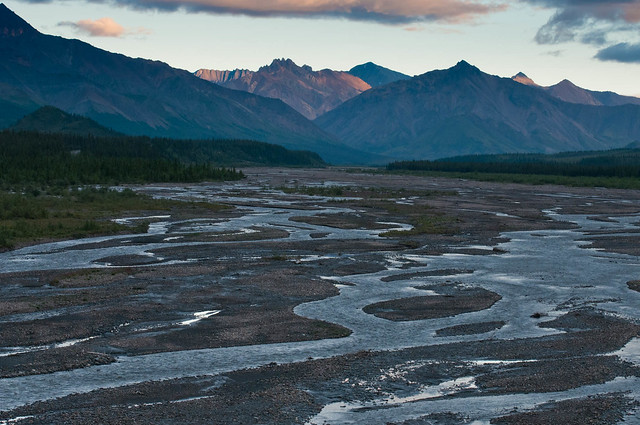
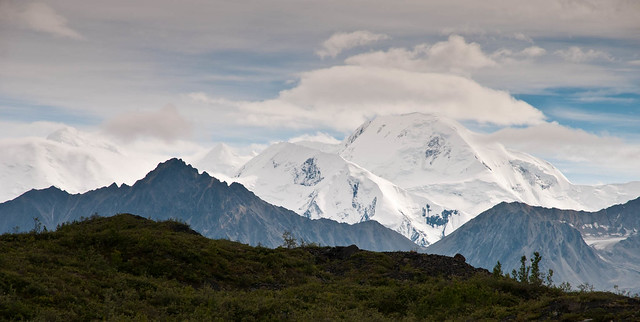
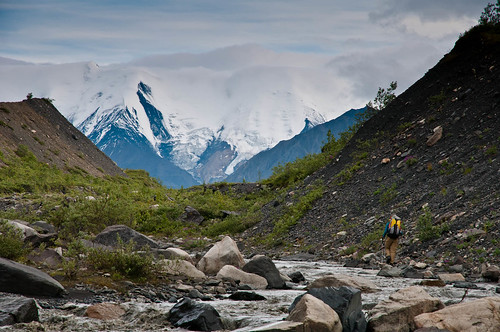
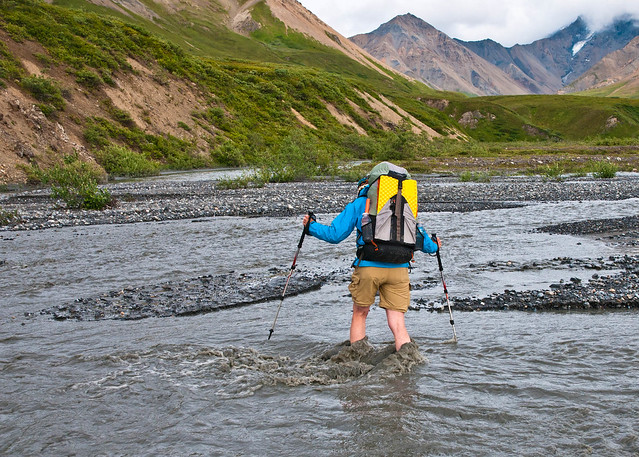
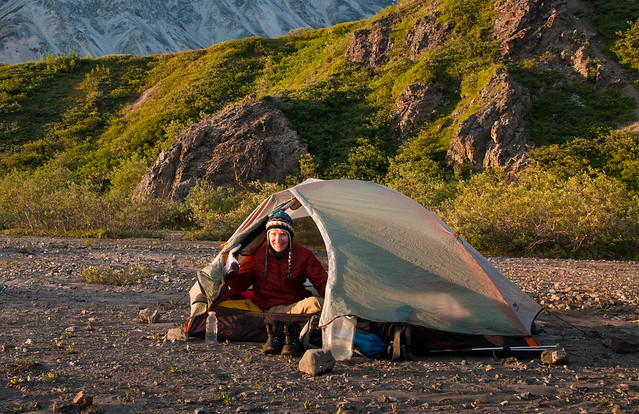
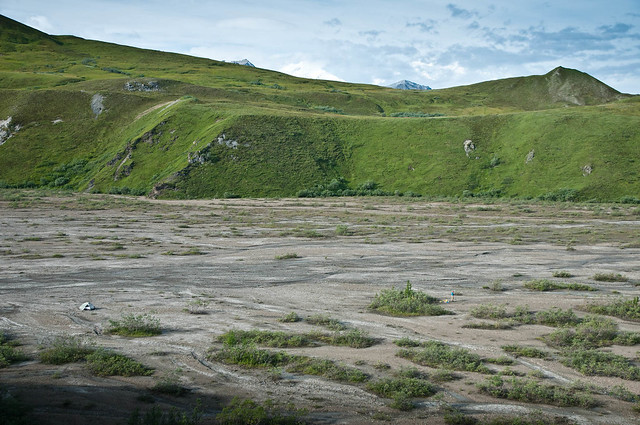

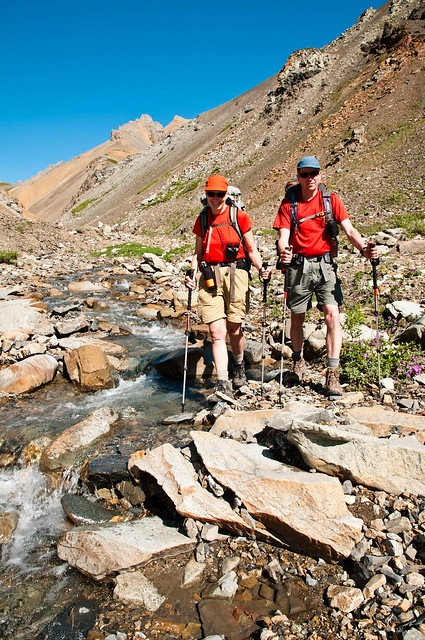
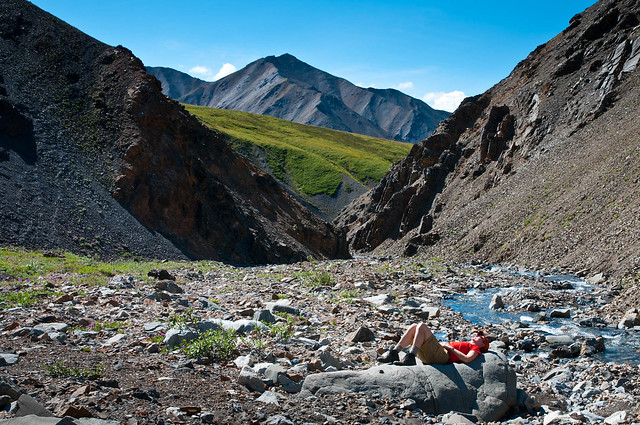
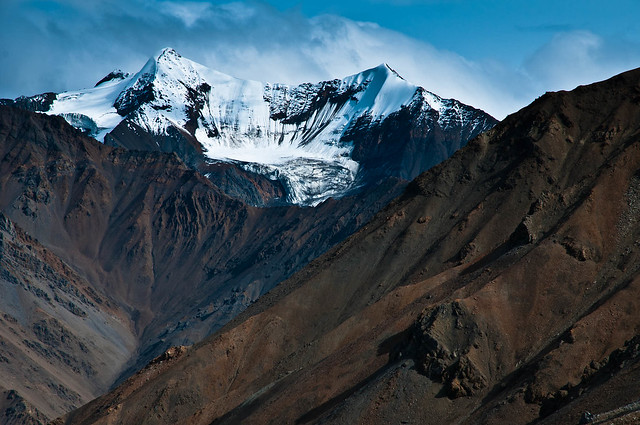
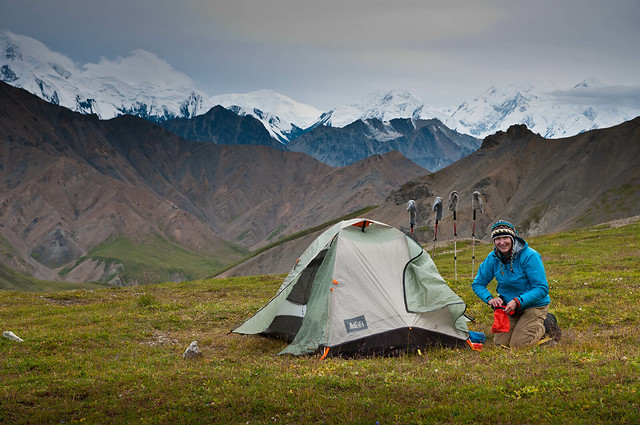


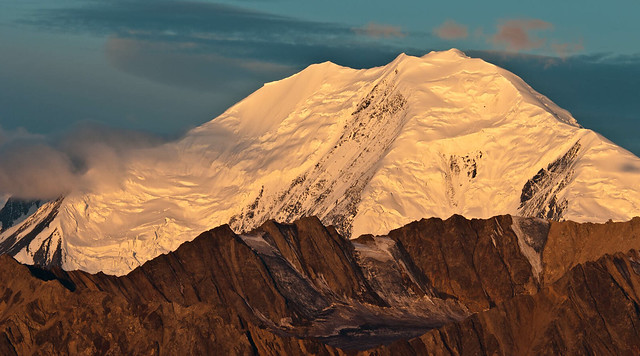
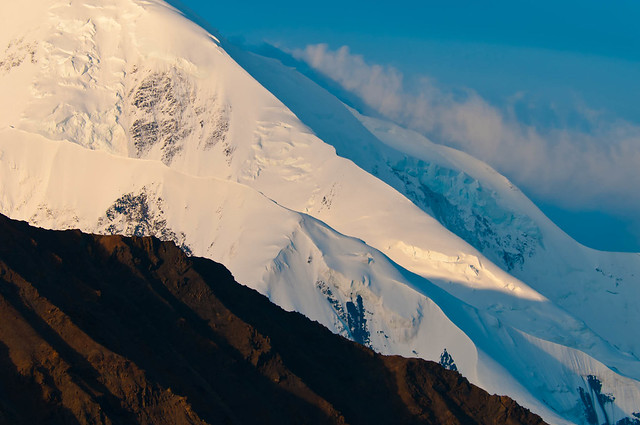
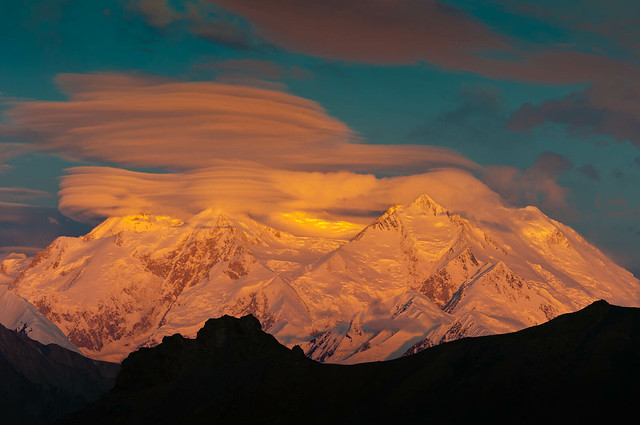
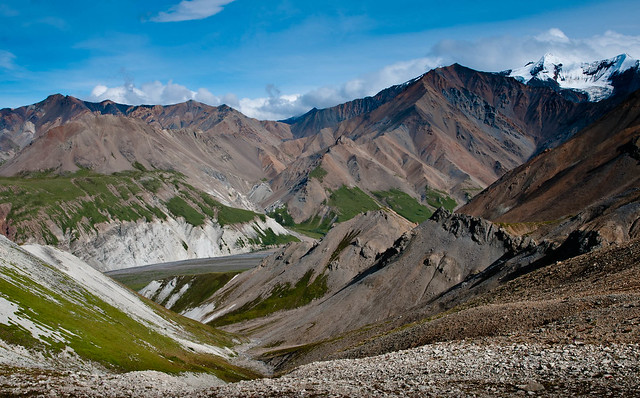

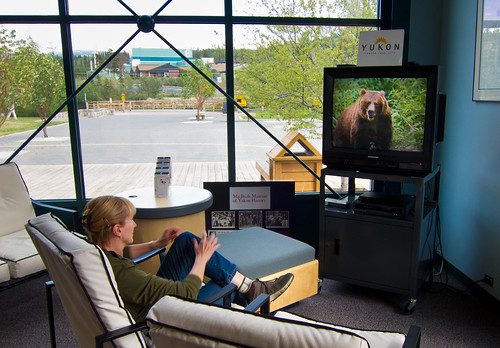
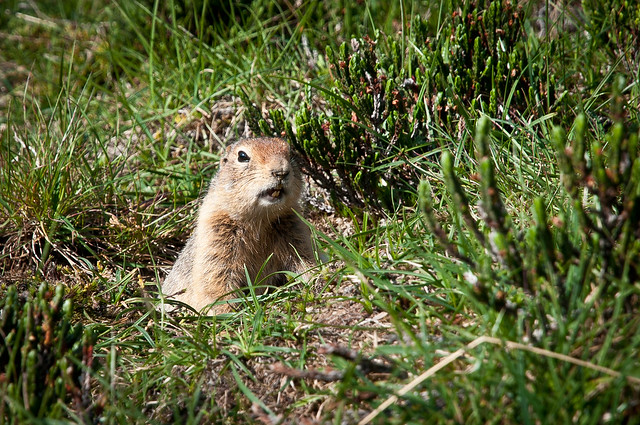

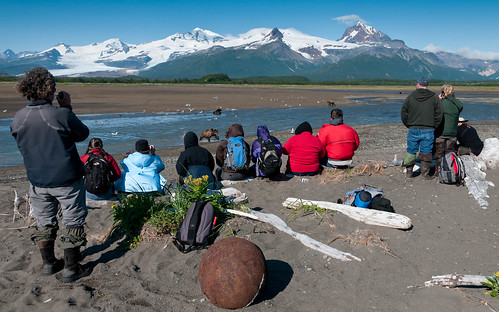






2 comments:
Awesome pics... lenses???
Thanks.
I'm shooting with a Nikon D330s and Nikon lenses: 10-24, 16-85, 70-300. You can see all of the detailed technical information by viewing the EXIF data in Flickr. Click on a picture in the blog. Click on the camera identifier in Flickr and you'll see all of the EXIF data there.
Enjoy,
John
Post a Comment